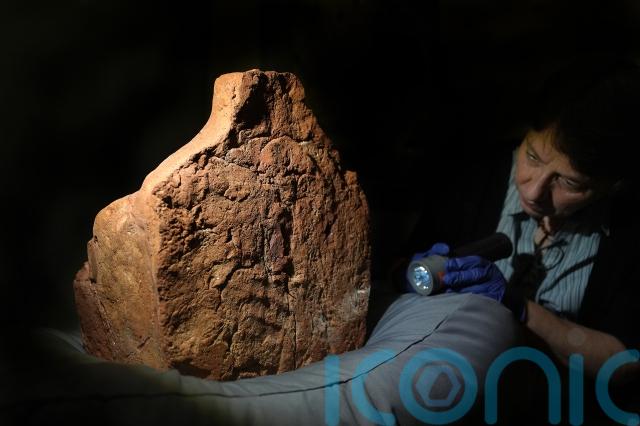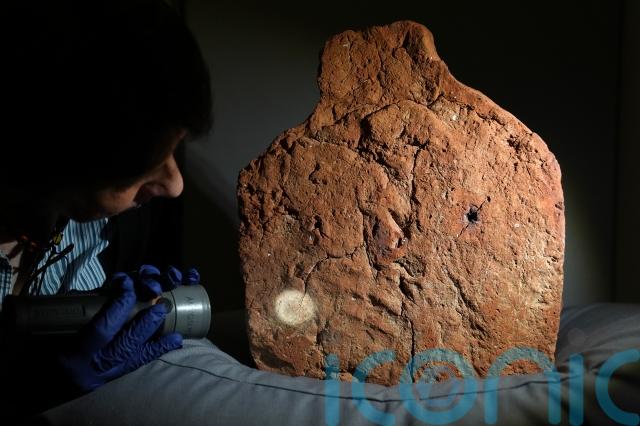
A handprint left 4,000 years ago on a clay model crafted to go inside an Egyptian tomb has been discovered during preparation for an exhibition at a museum.
The “rare and exciting” complete handprint was probably made by the maker of the item who touched it before the clay dried, an Egyptologist at Cambridge’s Fitzwilliam Museum said.
The imprint was left on the base of a “soul house” – a clay model in the shape of a building which would then be placed inside a burial.
The model on which the handprint was discovered has been dated to around 2055–1650 BCE.
It had an open front space where items of food were laid out, in this example loaves of bread, a lettuce and an ox’s head.

Soul houses may have acted as offering trays or provided a place for the soul of the deceased to live within the tomb.
Helen Strudwick, senior Egyptologist at the Fitzwilliam Museum, said: “We’ve spotted traces of fingerprints left in wet varnish or on a coffin in the decoration, but it is rare and exciting to find a complete handprint underneath this soul house.
“This was left by the maker who touched it before the clay dried.
“I have never seen such a complete handprint on an Egyptian object before.”
The researcher, who is also curator of the museum’s new Made in Ancient Egypt exhibition, continued: “You can just imagine the person who made this, picking it up to move it out of the workshop to dry before firing.
“Things like this take you directly to the moment when the object was made and to the person who made it, which is the focus of our exhibition.”

Analysis of the item suggests the potter who made it first created a framework of wooden sticks and then coated it with clay to make a building with two storeys supported by pillars.
Staircases were formed by pinching the wet clay.
During firing the wooden framework burnt away, leaving empty spaces in their place.
The handprint found underneath was probably made when someone, perhaps the potter, moved the house out of the workshop to dry before firing in a kiln, according to the researchers.
Ceramics were widely used in ancient Egypt, mostly as functional objects but occasionally as decorative pieces.
The soul house will be on display in the Fitzwilliam’s Made in Ancient Egypt exhibition which opens to the public on October 3.
Subscribe or register today to discover more from DonegalLive.ie
Buy the e-paper of the Donegal Democrat, Donegal People's Press, Donegal Post and Inish Times here for instant access to Donegal's premier news titles.
Keep up with the latest news from Donegal with our daily newsletter featuring the most important stories of the day delivered to your inbox every evening at 5pm.